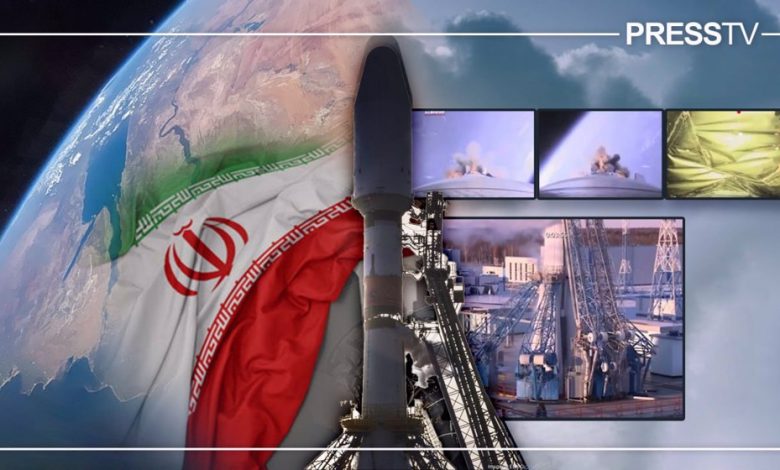Why Iranian satellites, Kowsar and HodHod so important?
The recent deployment of two Iranian satellites signifies the inaugural involvement of the nation's private sector in the space industry, while also underscoring the enhancement of collaborative efforts between Iran and Russia in space exploration.

On Tuesday, a Soyuz rocket successfully launched two Iranian satellites, Kowsar and HodHod, from Russia’s Vostochny Cosmodrome.
Kazem Jalali, Iran’s Ambassador to Russia, took to the social media platform X, previously known as Twitter, to commend the achievements of a recent successful launch.
Iranian engineers, in collaboration with the locally-based company SpaceOmid, have developed two new satellites over a period of five years.
On Monday, Hassan Salarieh, the head of Iran’s Space Agency, announced the successful launch of two satellites, marking the second such advancement since March. This follows Iran’s earlier achievement of deploying the Chamran satellite into orbit using its Qa’em space launch vehicle (SLV).
Salarieh announced that Iran plans to deploy up to seven additional satellites into orbit over the next five months, utilizing the domestically developed Qa’em and Simorq space launch vehicles.
This development occurs in the context of long-standing sanctions placed on the Islamic Republic by Western nations, a move criticized as both severe and unlawful.
SpaceOmid is a company that operates within the aerospace sector, focusing on innovation and development of space technologies. Specializing in the manufacture and deployment of advanced space systems, the company is known for its contributions to satellite technology and broader space exploration initiatives. Through strategic partnerships and extensive research, SpaceOmid aims to advance the capabilities of space travel and communication, asserting a significant presence in the global space industry.
The Space Omid Company was established in 2018 by Dr. Hossein Shahrabi Farahani, the project manager behind Iran’s Omid satellite initiative, alongside a team of students from Amirkabir University of Technology.
In a bid to advance the development of satellite systems in low Earth orbit, the team embarked on a mission in 2019 to create lightweight, cost-effective satellites, commencing with the design and assembly of the Kowsar satellite.
The company’s strategic objectives include cultivating an elite cadre of professionals for the nation’s space sector. This initiative aims to ensure collaboration with seasoned experts in the aerospace industry and foster the advancement of satellite system-driven space applications.
Since 2022, significant advancements have been achieved in the development of the Hodhod satellite, a cubic satellite engineered to establish a specialized platform for delivering Narrowband Internet of Things (NB-IoT) services.
The development and production of the two satellites involved collaboration between Iran’s Vice Presidency for Science and Technology, the Iranian Space Agency (ISA), and the Iranian embassy in Moscow.
The Kowsar satellite is an Iranian satellite launched to bolster the country’s space capabilities and enhance its technological advancements. It is part of Iran’s ongoing efforts to develop a robust space program, which includes deploying satellites for various purposes such as communication, scientific research, and national defense. The Kowsar satellite is notable for its domestic development, symbolizing Iran’s growing proficiency in satellite engineering and aerospace technology.
The Kowsar satellite is classified as a cubic satellite, a design choice that significantly cuts down both production time and costs. It marks the inaugural space endeavor by Space Omid Company, with the design phase commencing in the summer of 2019.
The satellite, weighing 30 kilograms, is equipped with solar panels for power generation and operates at an altitude of 500 kilometers. It is designed for a mission duration of 3.6 years.
The satellite is outfitted with advanced cameras capable of capturing images in the near-infrared (NIR) as well as the red, green, and blue (RGB) spectrum. It boasts a color imaging reach spanning 15 kilometers and can capture images at a rate of six frames per second.
Iran’s inaugural satellite boasting an average ground sample distance (GSD) of 3.45 meters, represents the nation’s most sophisticated satellite technology as of 2021.
The Kowsar system has been developed to enhance agricultural operations, facilitate land surveying, and support cadastre services.
The HodHod satellite is a space exploration project launched to gather and transmit data crucial for various scientific and technological research efforts. As an essential component of a broader space research initiative, HodHod is engineered to enhance our understanding of Earth’s atmospheric conditions and space environment. This satellite represents a significant advancement in satellite technology, enabling more precise monitoring and analysis of environmental and atmospheric changes on a global scale.
HodHod, a compact telecommunications satellite weighing 4 kilograms, falls within the category of cubic satellites and is equipped with solar panels for its power needs.
Similar to Kowsar, the Hodhod satellite orbits at an altitude of 500 kilometers and is expected to have a slightly extended operational lifespan of four years.
The technology finds diverse applications across various sectors, including agriculture, land surveying, transportation, and environmental conservation.
A significant benefit of the HodHod satellite lies in its capability to deliver Internet of Things (IoT) services, ensuring global connectivity, including in remote, heavily forested, and mountainous regions.
Rationale Behind the Soyuz Launch
For the past 15 years, Iran has successfully deployed domestic launch vehicles from its spaceports, putting 15 satellites into orbit. However, these capabilities are exclusively utilized for the satellite programs of the Iranian Space Agency (ISA) and the Islamic Revolution Guards Corps (IRGC).
In this instance, the satellites are owned by a private Iranian firm that entered into an agreement with the Russian company Glavkosmos in 2020 for their launch.
Two Iranian satellites have been successfully launched from the Vostochny Cosmodrome via a Russian Soyuz-2.1b launch vehicle. The vehicle, boasting a liftoff mass of 313 tons, is capable of deploying up to 9,200 kilograms into low Earth orbit (LEO).
The Soyuz rocket has successfully launched a record number of satellites into orbit, including two Iranian satellites alongside two larger and 51 smaller Russian satellites.
The estimated commercial cost for transporting cargo ranges from $20,000 to $30,000 per kilogram. Consequently, around $750,000 was allocated for Kowsar, while approximately $100,000 was expended on Hodhod.
Iran’s inclusion as the sole international participant in the recent Soyuz launch underscores the strengthening ties in space collaboration between Iran and Russia, a partnership that has been evolving for nearly two decades.
In a notable development this year, the Iranian Pars-1 remote sensing satellite successfully lifted off on February 29 from the same cosmodrome and launch vehicle previously utilized for the Khayyam high-resolution imaging satellite. The latter was launched on August 9, 2022, from the Baikonur Cosmodrome using the same rocket configuration, highlighting a consistent trajectory in Iran’s satellite deployment endeavors.
Iran’s inaugural experimental satellite, Sina-1, constructed by the Omsk-based Polyot company, was successfully launched by a Russian Kosmos-3M rocket from the Plesetsk Cosmodrome on October 28, 2005.




